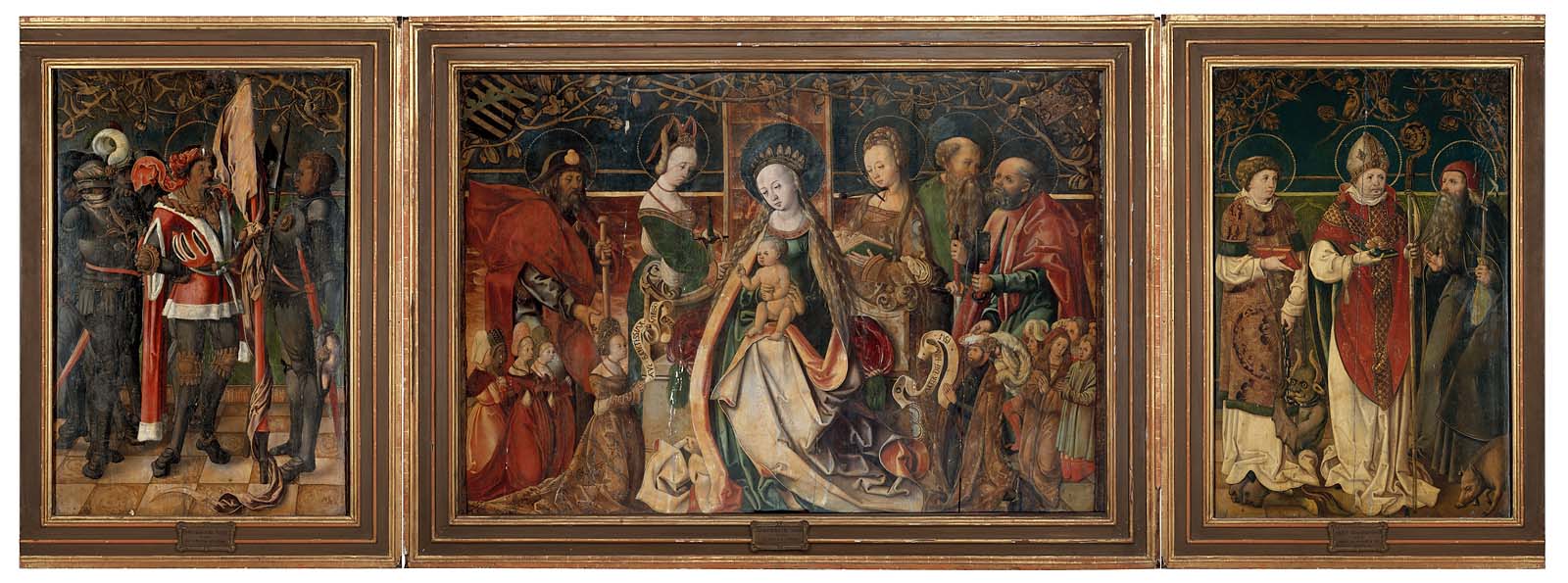The Calenberg Altarpiece displays one of the most unusual combinations of Black African figures of any European Renaissance painting. Saint Maurice appears in the left wing of the altarpiece, accompanied by several Black companions. This depiction of multiple Black figures in one painting was highly unusual for the time. Occasionally, the Black Magus would appear alongside Saint Maurice, but in general it is thought that they represented an abstract piety. A singular Black figure was a representative of a larger nation of people with similar complexions.
In the Calenberg Altarpiece, Saint Maurice’s unusually Black companions display the stereotypical African physiognomy – a dark complexion, full lips, wide nose, and tightly curled hair. By contrast, Saint Maurice has distinctly lighter skin, a bony and projecting nose, and lips hidden by a bushy mustache rarely worn by Africans in European art.
But Saint Maurice and his companions are not the only Black figures in the altarpiece. Perhaps more surprising is the presence of the Black lady-in-waiting, kneeling in a piteous prayer posture alongside three white servants, behind the commissioner of the painting, Catherine of Saxony (1468 – 1524) on the left-hand side of the central panel of the altarpiece. The presence of Black women was extremely rare in German and European donor paintings. It is thought that the woman in this painting might be the descendant of slaves brought back to Bohemia from Portugal by Catherine’s great-uncle.
Julia Alcamo
deutsch
Source: Master of the Goslar Sibyls (attributed), The Calenberg Altarpiece (ca. 1500-1524), The Museum of Fine Arts Boston.

St. Maurice in the Calenberg Altarpiece (ca. 1500-24) by Julia Alcamo is licensed under a Creative Commons Attribution-ShareAlike 4.0 International License. Permissions beyond the scope of this license may be available at https://blackcentraleurope.com/who-we-are/.
